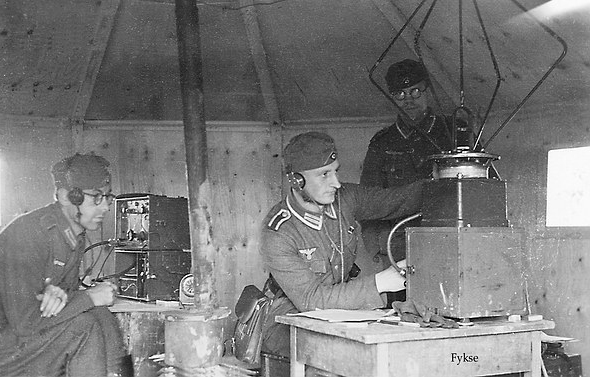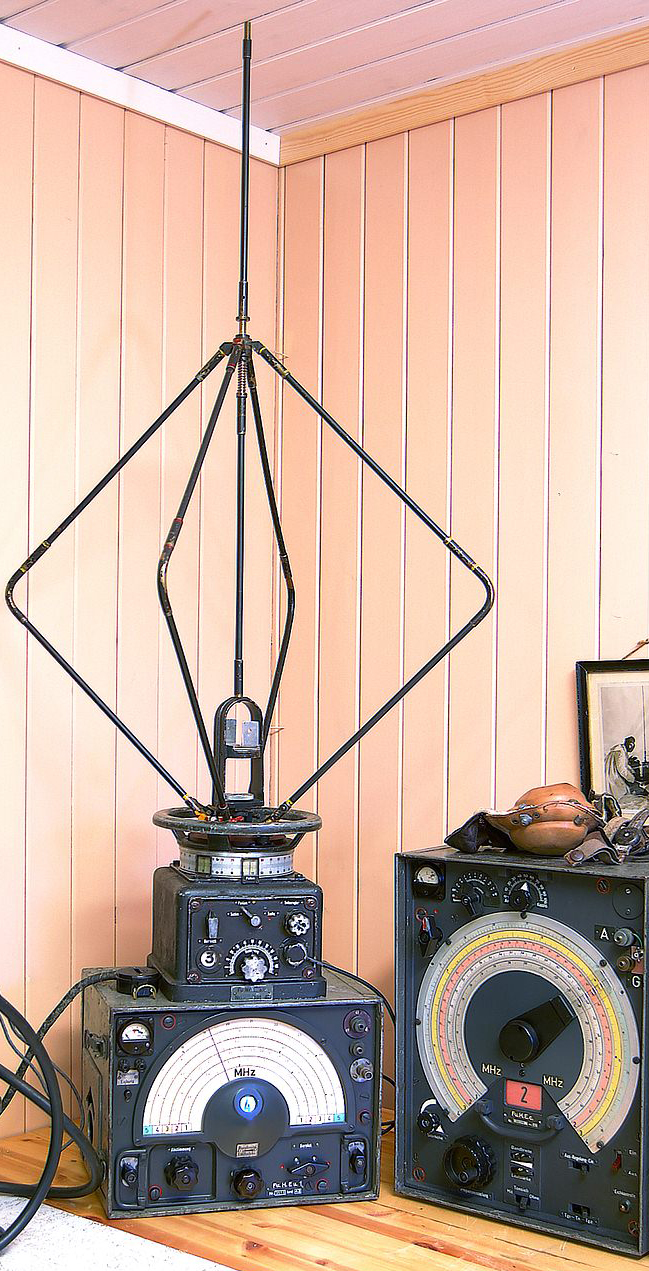ORPO Fu-B STELLE IN SCHEVENINGEN
W/T intercept unit of the Ordungspolizei in Scheveningen.
(Funkbeobachtunsstelle, or Fu-B-Stelle-Orpo)
By Hermann GISKES.
"Task of this unit was the tracing of, and listening to, enemy W/T traffic. Establishing, by listening, of W/T agents traffic, reception of two-way traffic, and determining the call-sings, and other traffic signals. The tracing of local enemy W/T agents by RDF methods. Arresting W/T agents in conjunction with the SIPO. The results of the above missions were reported to III-F for the purpose of analysis from an Abwehr point of view. In establishing W/T 'play' with the enemy, all technical data for the reception and establishment of traffic was procured, or dealt with, by Fu-B-ORPO, and the traffic of the agents concerned, or the official appointed to carry this out, was supervised by Fu-B-ORPO. The Fu-B-Stelle received the text of the W/T messages from the Stelle which was running the W/T 'play', i.e. II-F or the SIPO.
Between 1940 - 1943 Oberl. der Orpo HEINRICH, was the O.C. from 1943 onwards was Hauptmann ... (name forgotten).
The Stelle had roughly 30 officials at it's disposition, the greater part being W/T and W/T intercept specialists. In 1943, HQ was transferred to Driebergen near Utrecht. In the autumn of 1944 a large portion of the technical material was lost in an air attack near Zwolle, whilst it was in the process of being transferred to Northern Holland.
The unit was equipped with a fluctuating number of RDF cars. Generally speaking, however there was only one at disposal. From 1942 onwards portable Nahpeiler (short range RDF sets) were operated, which are said to have produced good results.
Results obtained in the local RDFing of enemy W/T operators varied considerably. Sometimes the fixing of enemy W/T bases succeeded surprisingly quickly, in other cases many months often elapsed, and there were cases when no results were achieved at all. As a non-technical man the reasons for this are not clear to me. During 1942-1943, on the average, two or three active W/T agent sets were continually under observation. This figure increased gradually from the beginning of 1944 onwards.
(Funkbeobachtunsstelle, or Fu-B-Stelle-Orpo)
By Hermann GISKES.
"Task of this unit was the tracing of, and listening to, enemy W/T traffic. Establishing, by listening, of W/T agents traffic, reception of two-way traffic, and determining the call-sings, and other traffic signals. The tracing of local enemy W/T agents by RDF methods. Arresting W/T agents in conjunction with the SIPO. The results of the above missions were reported to III-F for the purpose of analysis from an Abwehr point of view. In establishing W/T 'play' with the enemy, all technical data for the reception and establishment of traffic was procured, or dealt with, by Fu-B-ORPO, and the traffic of the agents concerned, or the official appointed to carry this out, was supervised by Fu-B-ORPO. The Fu-B-Stelle received the text of the W/T messages from the Stelle which was running the W/T 'play', i.e. II-F or the SIPO.
Between 1940 - 1943 Oberl. der Orpo HEINRICH, was the O.C. from 1943 onwards was Hauptmann ... (name forgotten).
The Stelle had roughly 30 officials at it's disposition, the greater part being W/T and W/T intercept specialists. In 1943, HQ was transferred to Driebergen near Utrecht. In the autumn of 1944 a large portion of the technical material was lost in an air attack near Zwolle, whilst it was in the process of being transferred to Northern Holland.
The unit was equipped with a fluctuating number of RDF cars. Generally speaking, however there was only one at disposal. From 1942 onwards portable Nahpeiler (short range RDF sets) were operated, which are said to have produced good results.
Results obtained in the local RDFing of enemy W/T operators varied considerably. Sometimes the fixing of enemy W/T bases succeeded surprisingly quickly, in other cases many months often elapsed, and there were cases when no results were achieved at all. As a non-technical man the reasons for this are not clear to me. During 1942-1943, on the average, two or three active W/T agent sets were continually under observation. This figure increased gradually from the beginning of 1944 onwards.
w.mugge@home.nl

Duits peilstation in Noorwegen © Helge Fyske.

© Helge Fyske